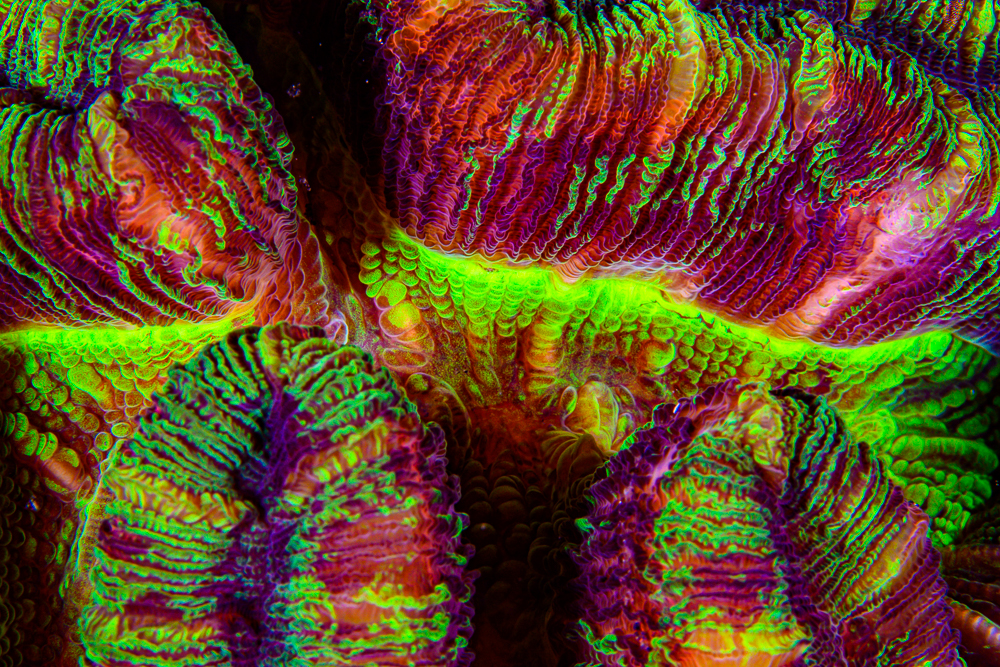
Coral diving on the black sand slope of North Bali can be thrilling for the passionate LPS enthusiast looking to visit all of their favorite LPS in their native habitats in one dive. CORAL photojournalist Vincent Chalias takes you along on a recent exploration of this black sand coral biotope, which can serve as an inspiration for a different sort of reef aquarium.
Up for a good start!
When we get on a dive site and start encountering some small Trachyphyllia geoffroyi by 10 m (30 ft), we know we’re going to get a good coral dive. They usually start out as brown in coloration in the shallows, but the further down you go, the more colorful they get.
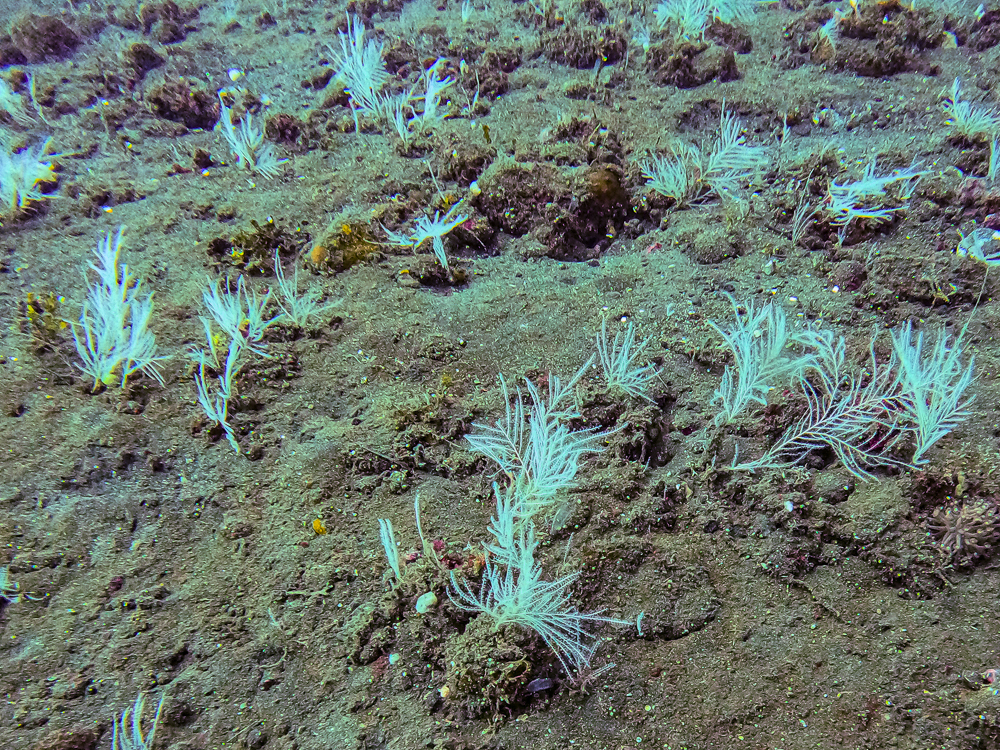
The dive takes us through a black-sand canyon, in between two ridged consisting of mixed sand and black pebbles. The substrate is covered in most places by the delicate Gorgonian of the rare genus Stephanogorgia sp.
A Cycloseris Frenzy
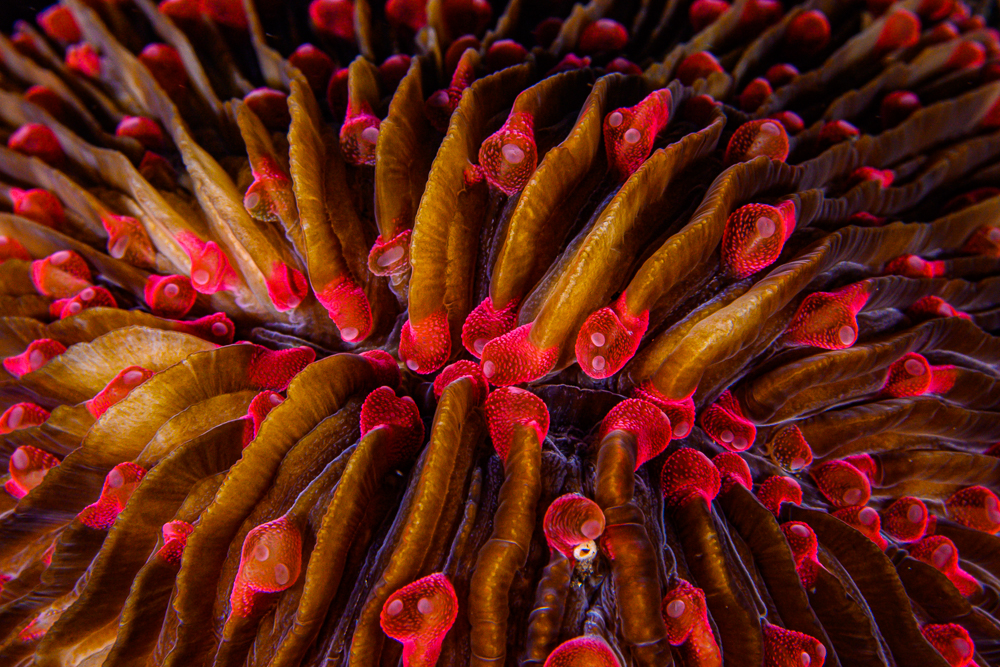
Along the descent, we encounter many different Cycloseris sp. displaying multiple, varied colorations. Already we are very happy with what we are observing. The diversity among them is always astonishing, and they make great colorful super macro-photography subjects.
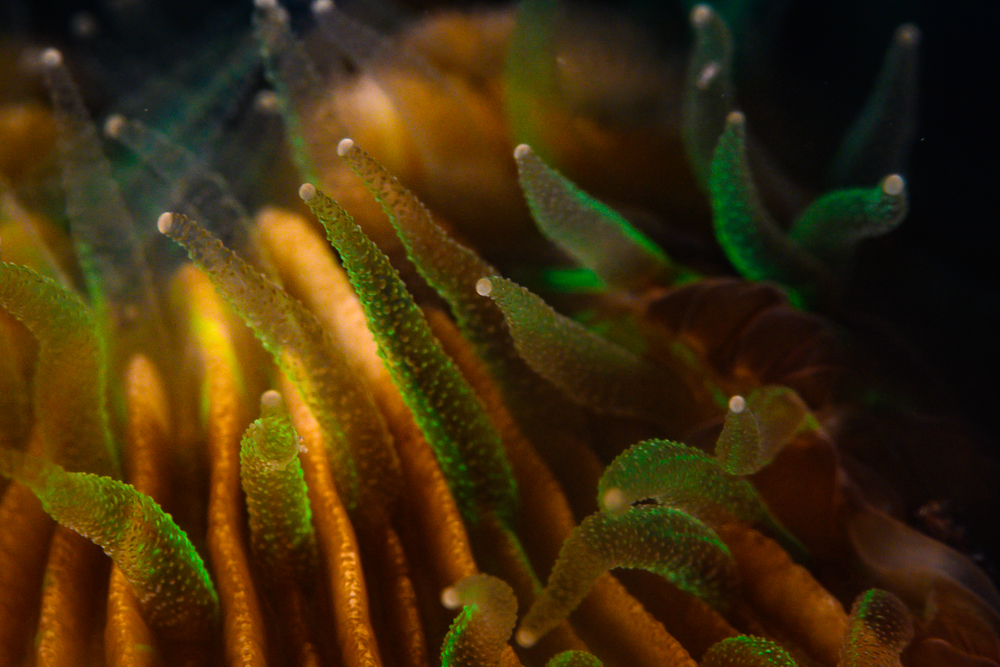
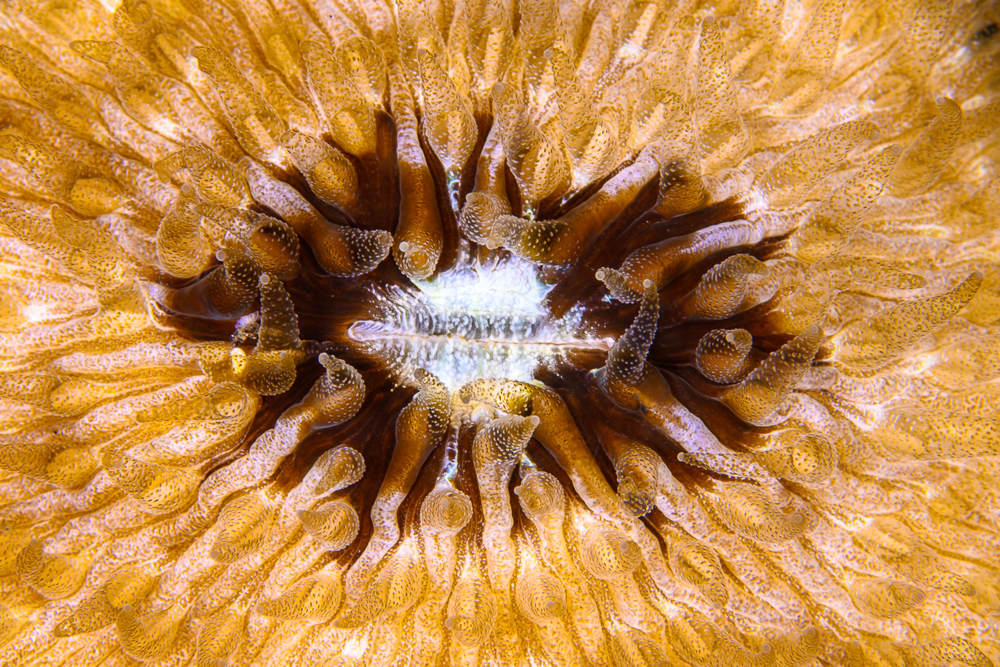
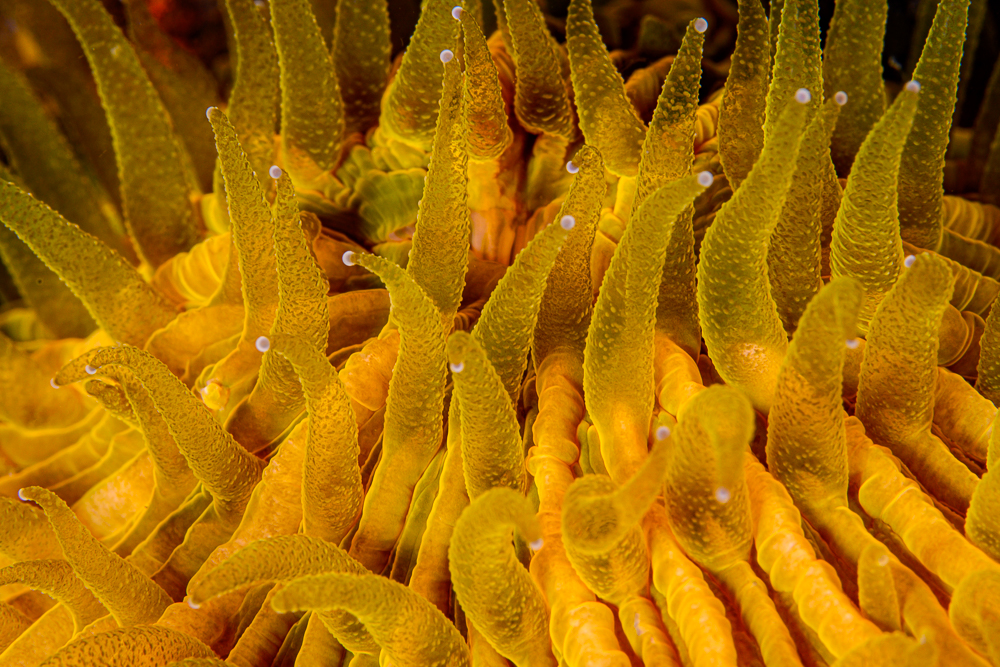
Fimbriaphyllia parancora, Branching Hammer
Another Classic Indo LPS coral that we find as we go down is the Branching Hammer Coral, Fimbriaphyllia parancora from 18 m (55ft).
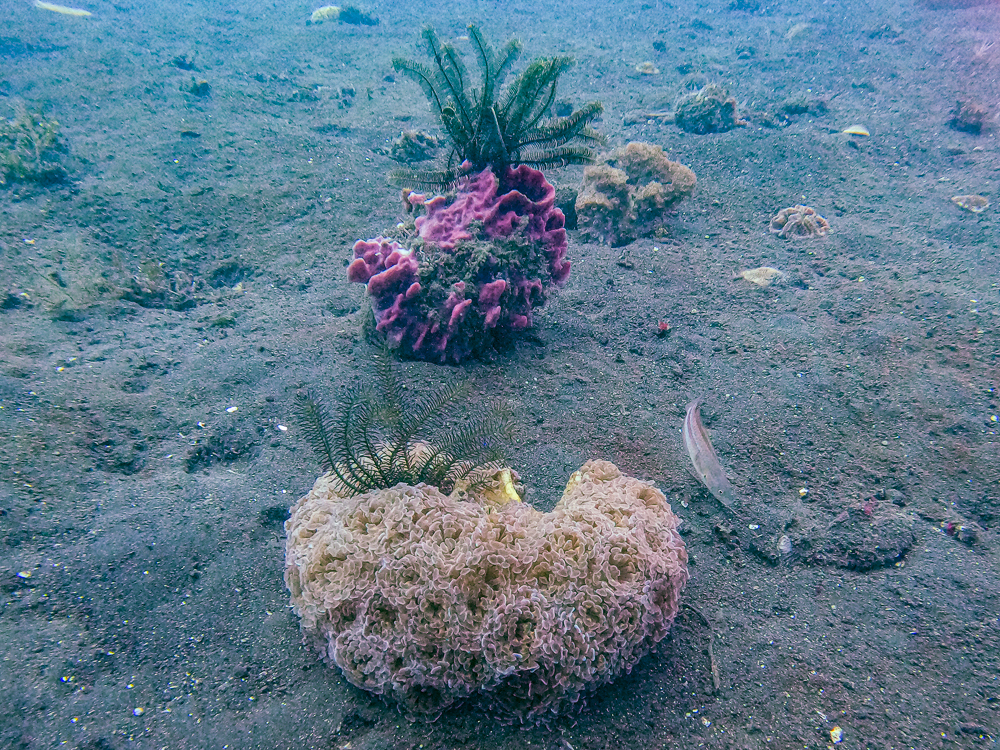
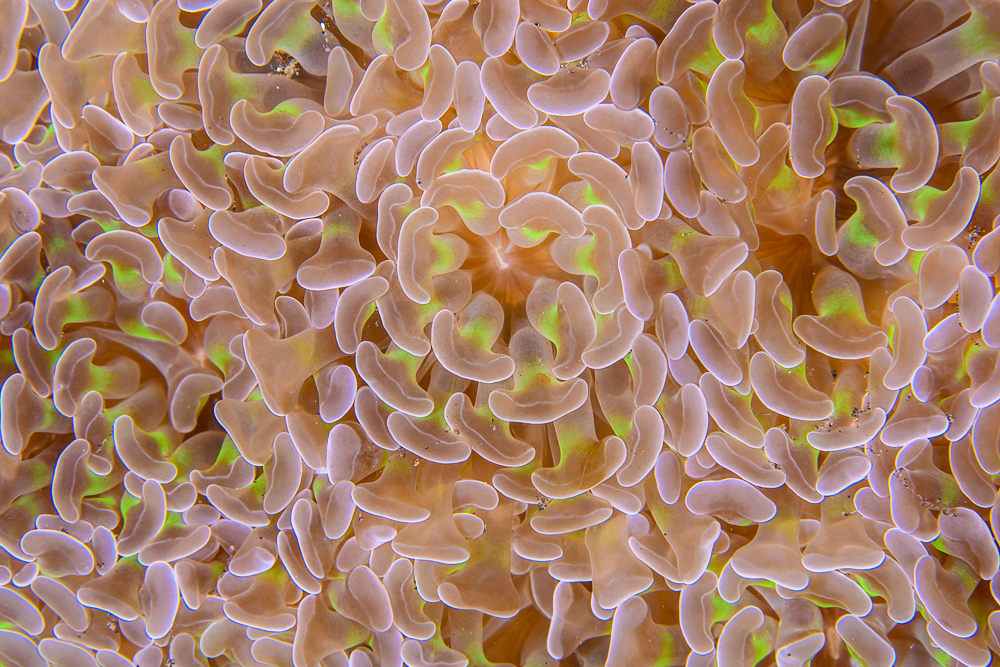
The Branching Hammer Coral is not really a classic inhabitant of this particular biotope. It even seems a bit out of place there. It usually prefers more LPS reef habitat, less sandy, and with a lot more corals. But we did find a lost colony.
Trachyphyllia geoffroyii, Open Brain Corals:
Once we reach the 20 m (60 ft) mark, the Trachyphyllia start to display more vibrant coloration. We start to see some metallic green and some red markings.
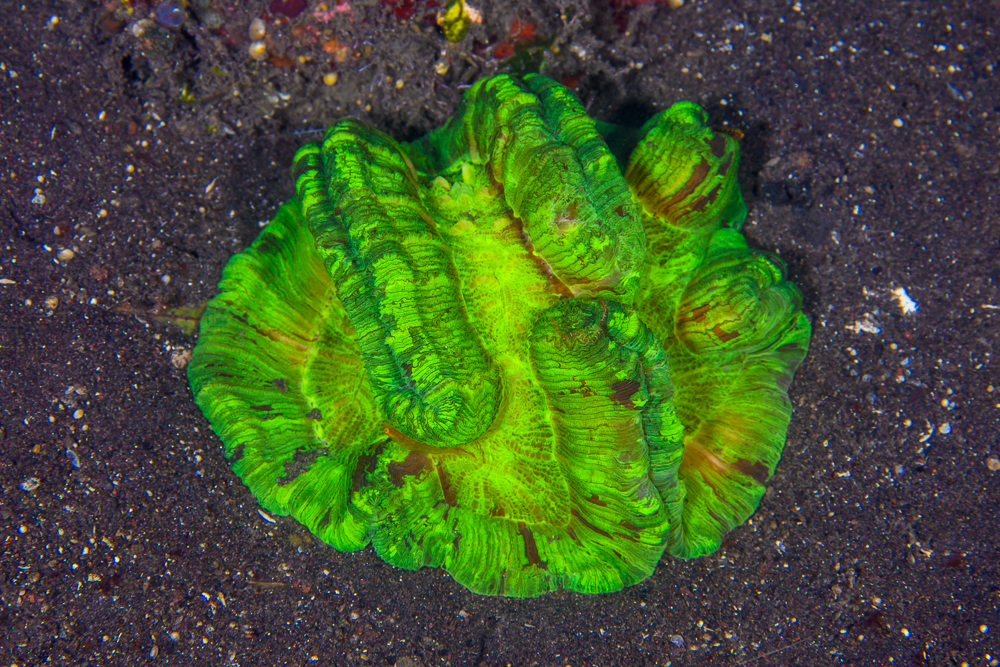
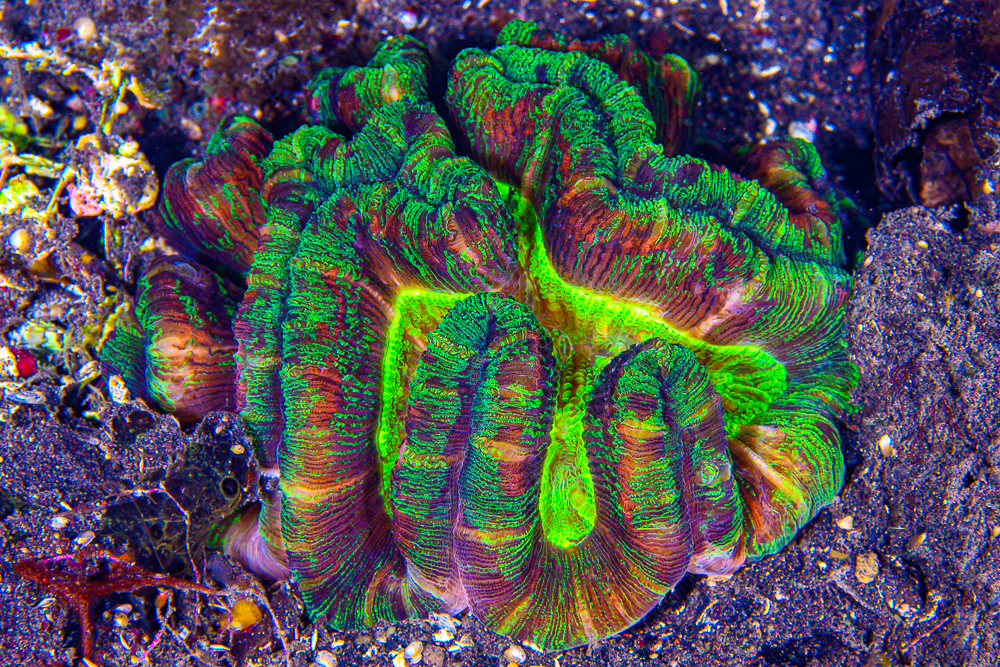
Trachyphyllia and Cycloseris are probably the most abundant corals on these LPS black sand slopes.
All the ‘Trachys’, in this particular site, were from the flat bottom type, formerly known as Wellsophyllia radiata. The biggest colonies were about 20 cm wide (6”), which is thought to be around 12-15 years old, according to the ex-situ growth rate.
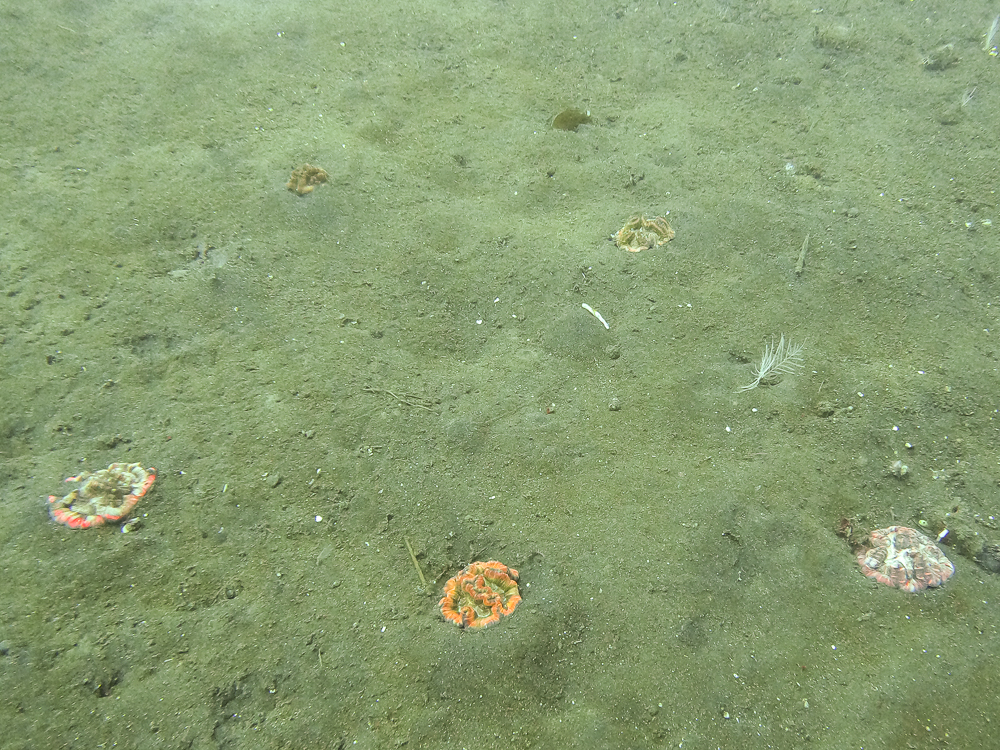
Since the current is not normally too strong in this area, and they live in a kind of canyon between sand ridges, they don’t need to anchor themselves. So, they don’t build a heavy, buried cone-shape skeleton part, which is energy-consuming, and just lay flat on the sand. They grow in a half-hemispherical shape.
Acanthophyllia deshayesiana, Green Donut Corals
It’s only from 22 m (70 ft) that we start to find a few Acanthophyllia deshayesiana, the famous Donut Coral. However, they don’t display the crazy coloration we can find in the aquarium hobby; that comes from a different area. Nevertheless, we found specimens in some very nice shades of green, yellow, and orange.
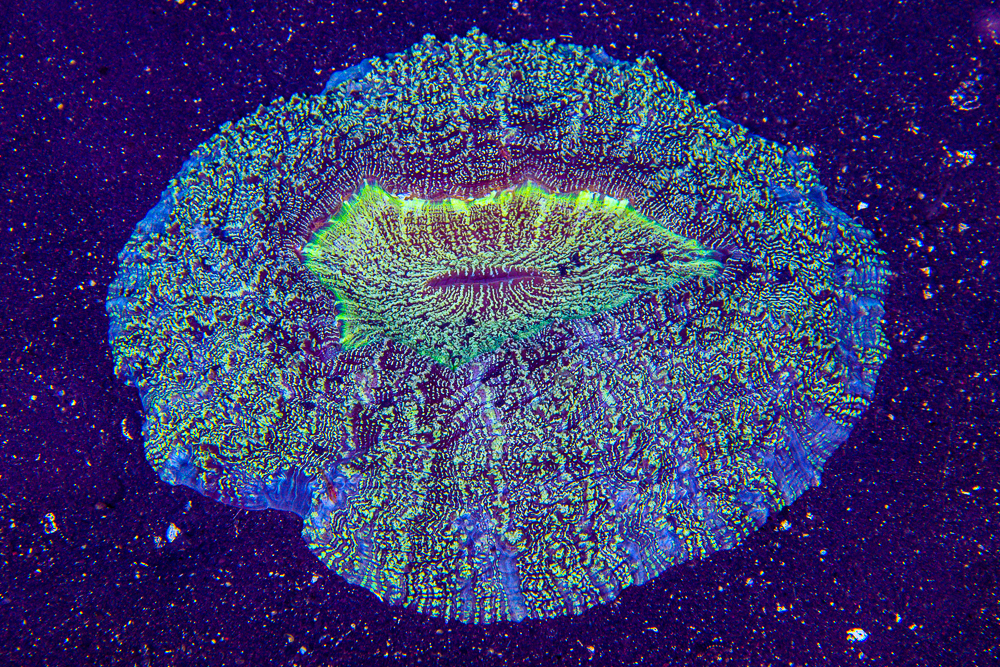
Like the Trachys, all the Acanthophyllia live with their skeletons buried in the sand, sometimes a bit sideways, with the mantle gracefully spreading out and lying down on the contrasting fine black sand.
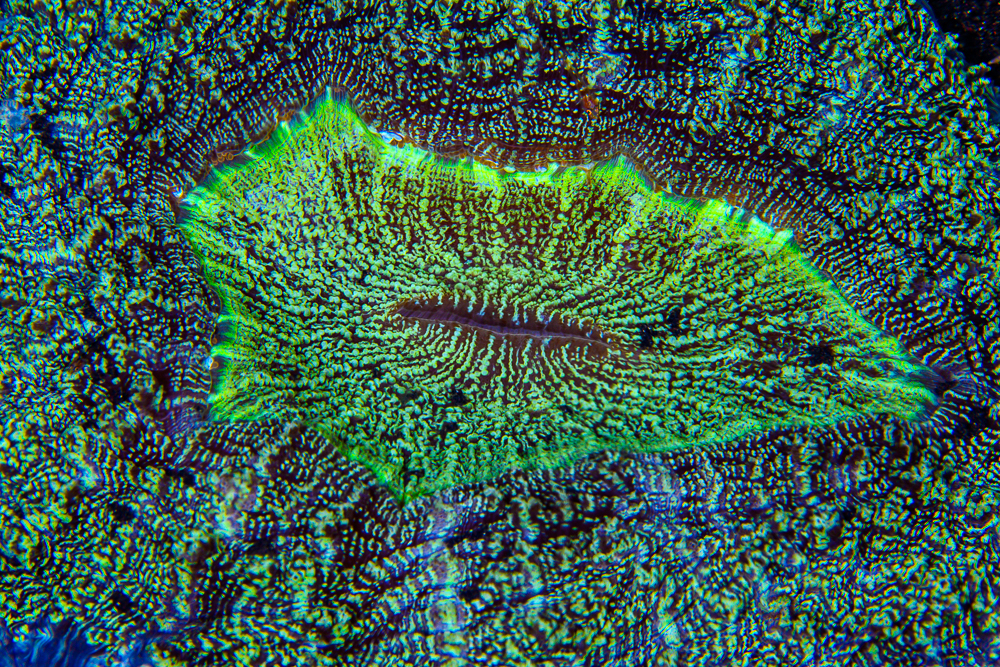
At this depth, the amount of light is pretty low. A PAR of 50-100 is all that is available. But the strategic location inside this sloping canyon between a couple of ridges creates a stall in the , which brings a lot of food to this habitate. So in exchange for poor lighting, the corals have very little competition and quite an abundant supply of food.
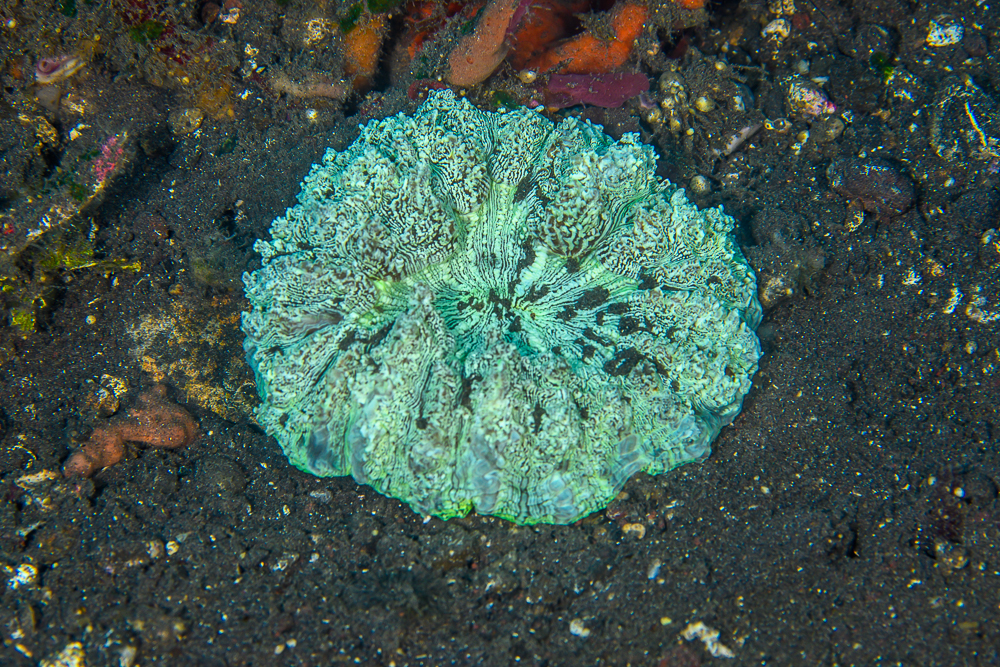
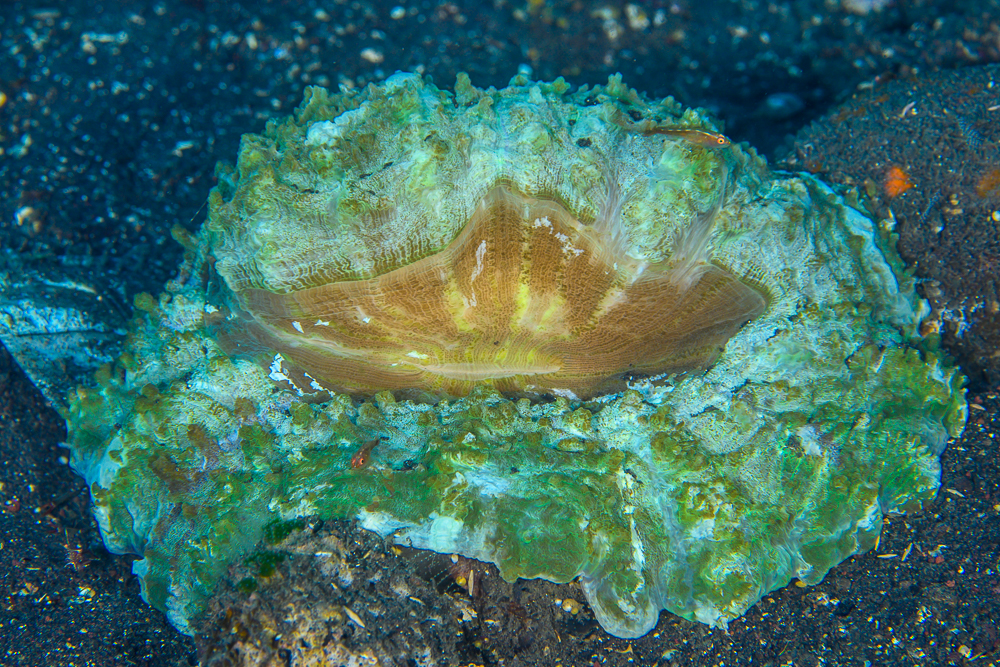
Indophyllia macassarensis:
These were not numerous, but we encountered a couple of individual corals. Indophyllia macassarensis are never the most colorful corals underwater. But they do adapt very well to aquarium conditions, and easily develop additional pigments.
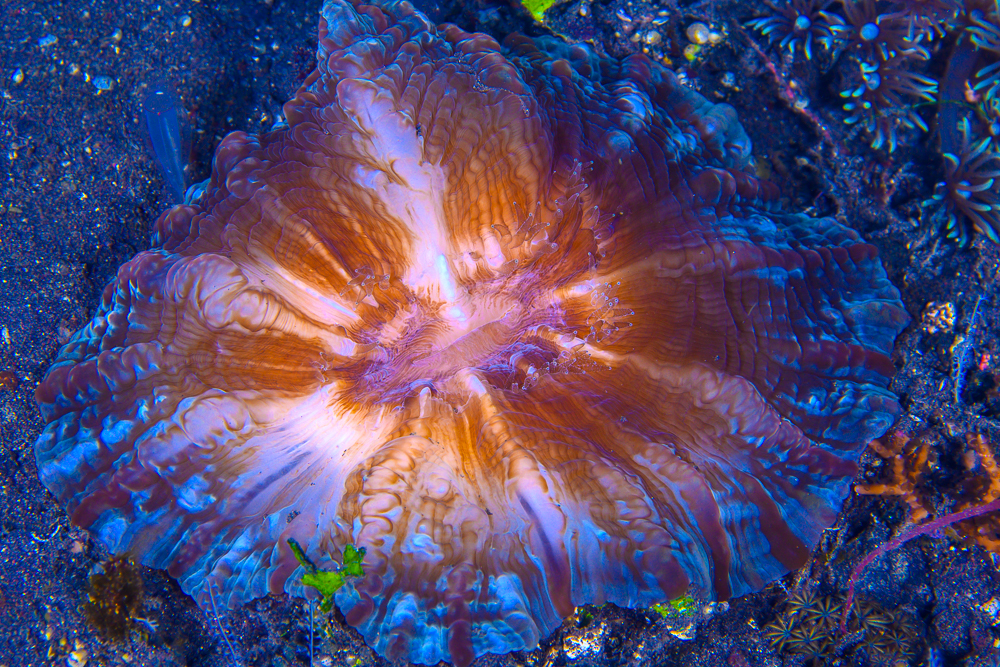
Like the ‘Deshy’, their skeleton stays partially buried in the sediment, and they expose and lay down their polyp mantle over the sandy surface.
Catalaphyllia jardinei, the Elegance Coral:
It’s only past the 30 m (90ft) mark, that we started encountering a few large colonies of Elegance Coral, Catalaphyllia jardinei. We first encountered a very large ‘ring’ skeleton shape, probably around a meter wide (3 ft), with very pretty yellow-tipped tentacles. This coral was simply lying down on the sand, and growing sideways.
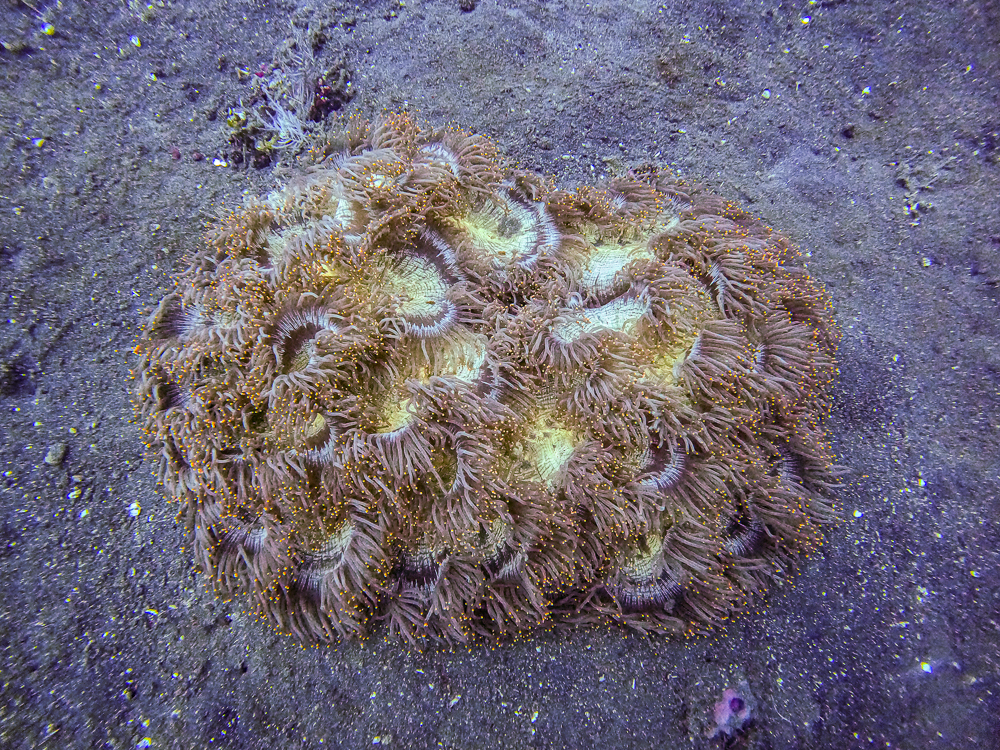
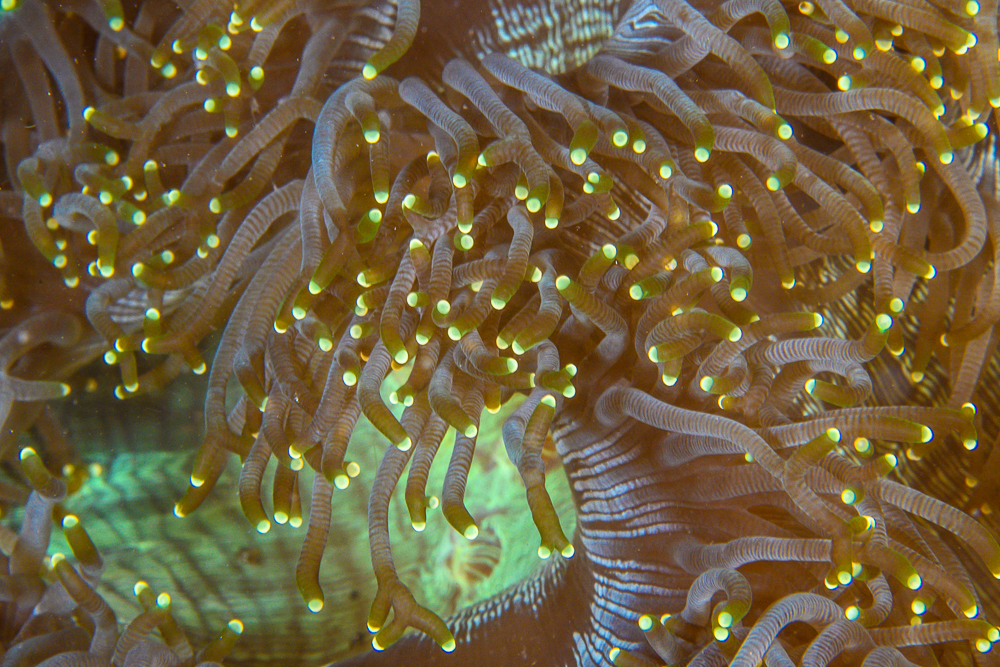
Further down, just before 40 m (120 ft) we found an astonishing pink-tipped tentacle specimen. The tentacle tips were glowing in the dark water.
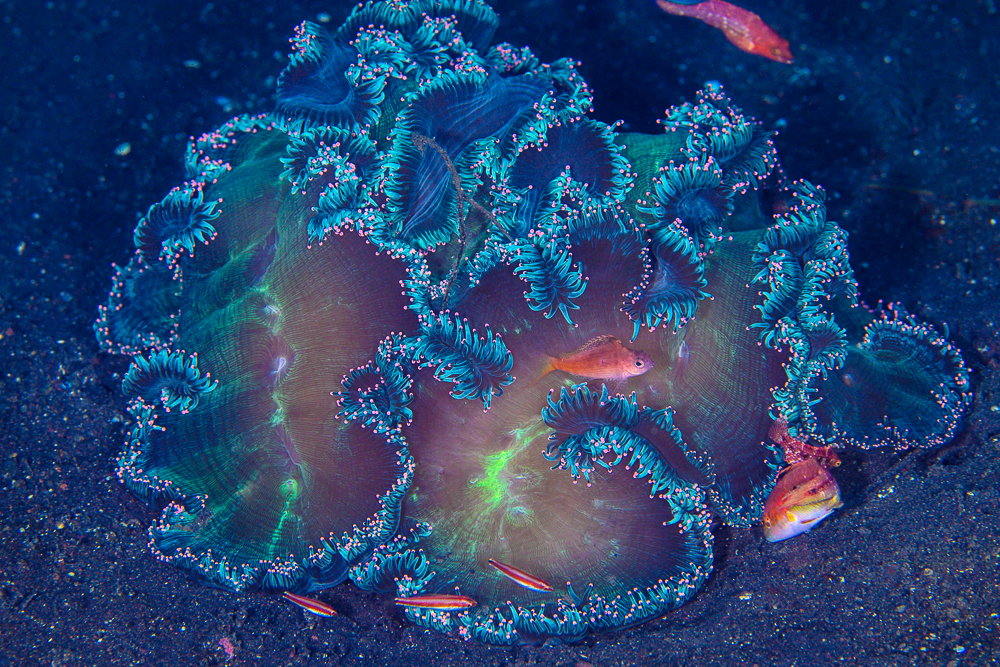
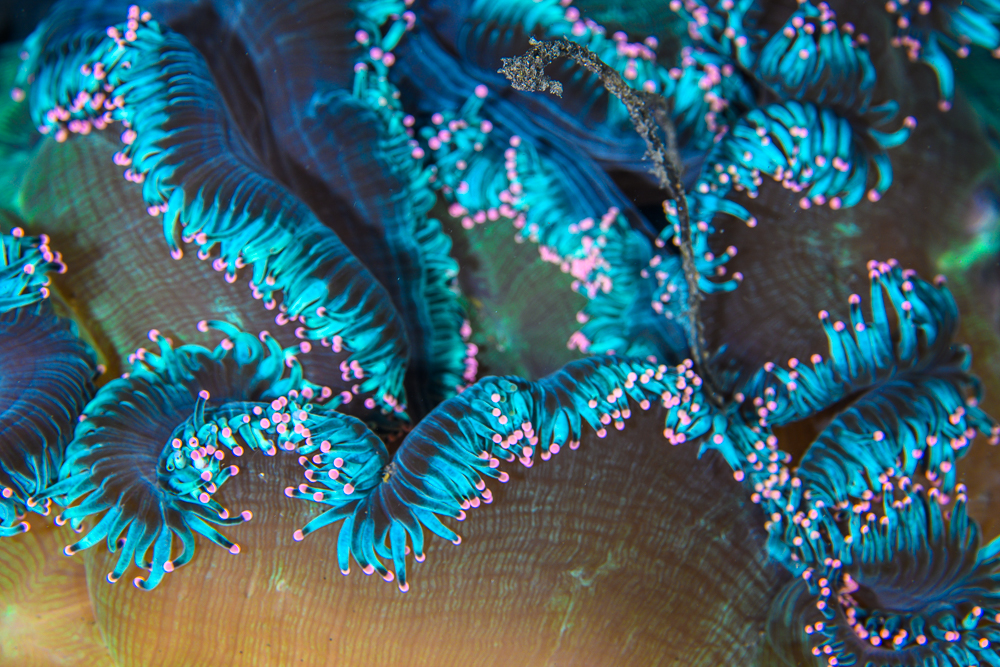
Many juveniles of Halichoeres hartzfeldii (Hartzfeld’s or Orangeline Wrasse), Oxycheilinus bimaculatus (Two-spot Wrasse), and Cyprinocirrhites polyactis (Red or Swallowtail Hawkfish) were swimming around each coral as a micro-ecosystem on its own.
This habitat is unique, and having these corals on black background causes even more subtly-colored corals to really stand out.
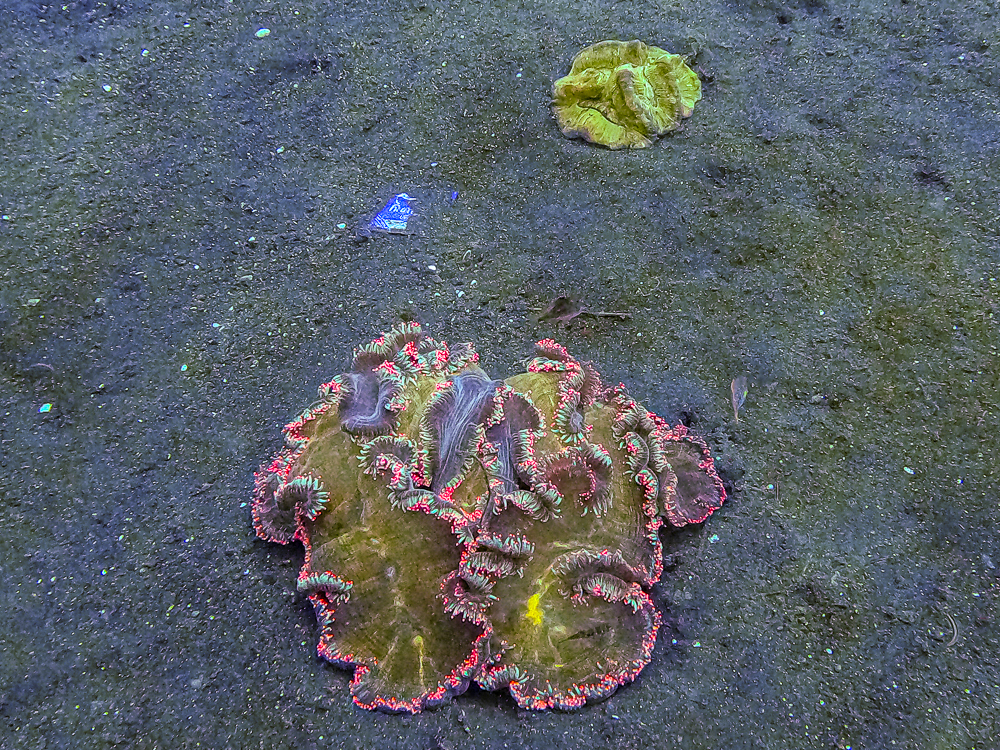
Pleurosicya mossambica
One fish that were associated with all of these corals is the little Mozambique Ghost Goby, Pleurosicya mossambica.
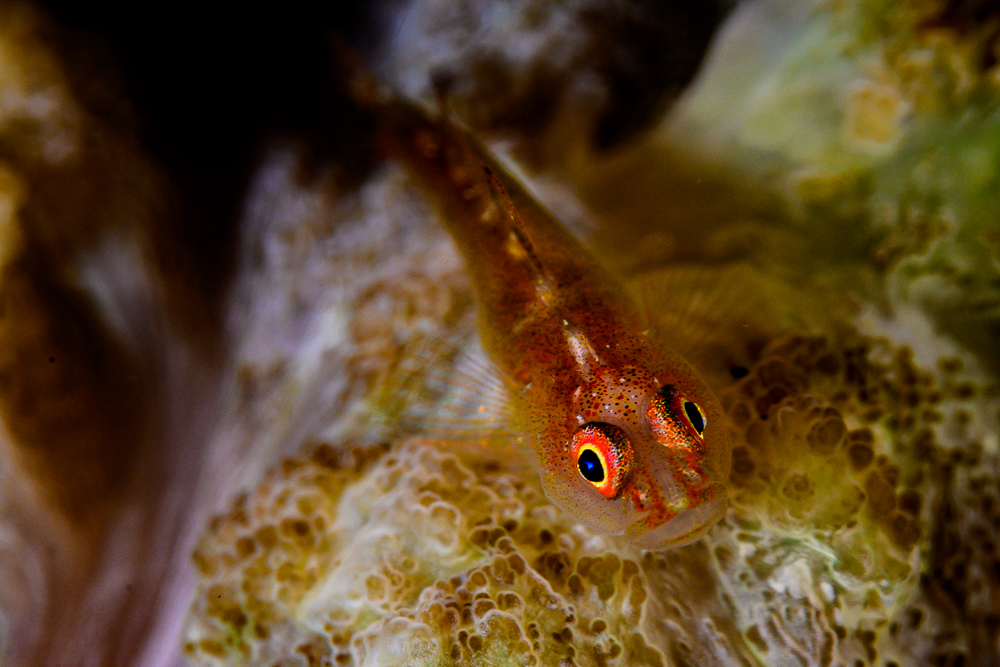
Know as the Mossambique Ghost Goby or the Toothy Goby, this fish reaches a maximum length of only 3 cm (1.2 inch). Many of the LPS corals we encountered were home to a few specimens, so these gobies naturally live in groups. It is possible that these groups represent harems. Maintaining a group of them will probably lead to some very interesting behavioral observations in the aquarium.




